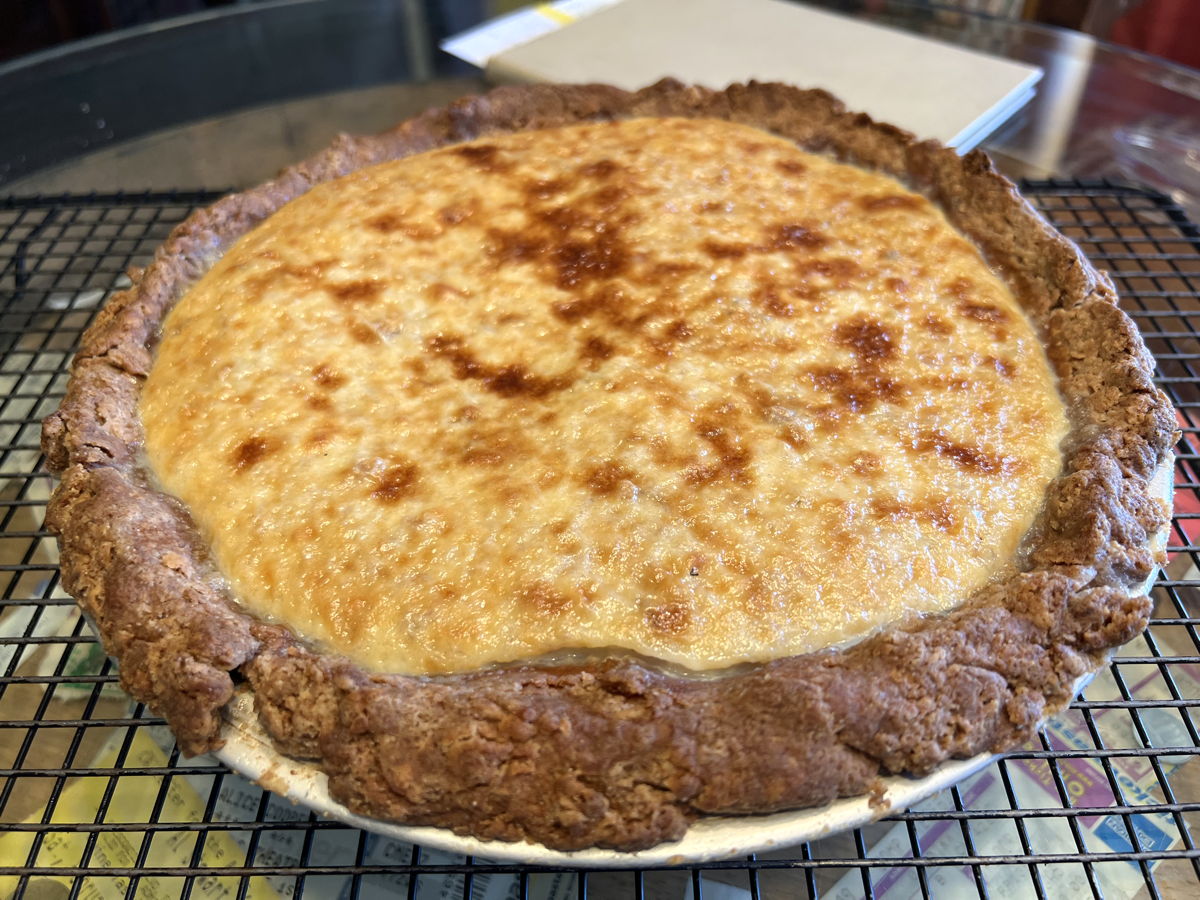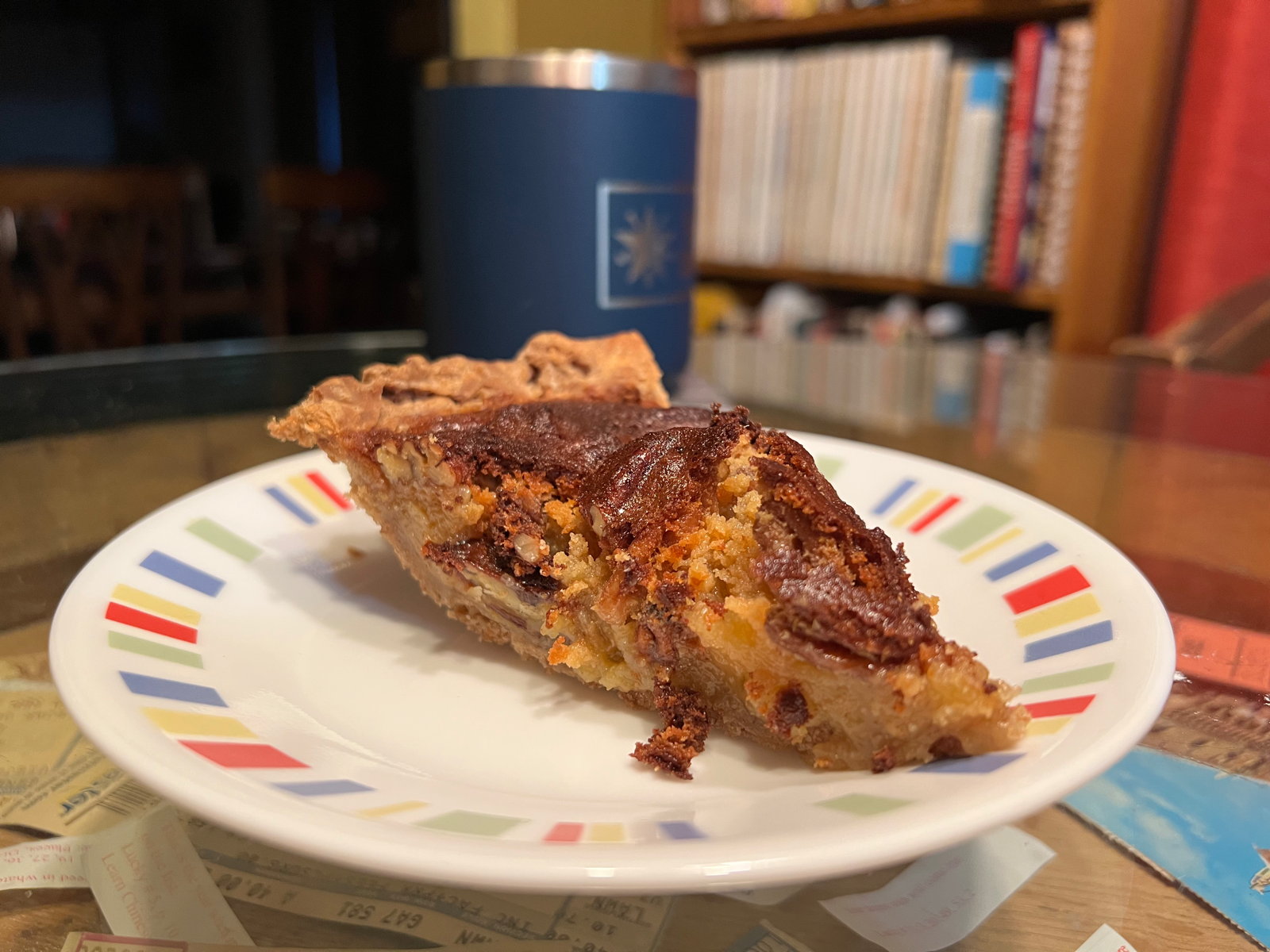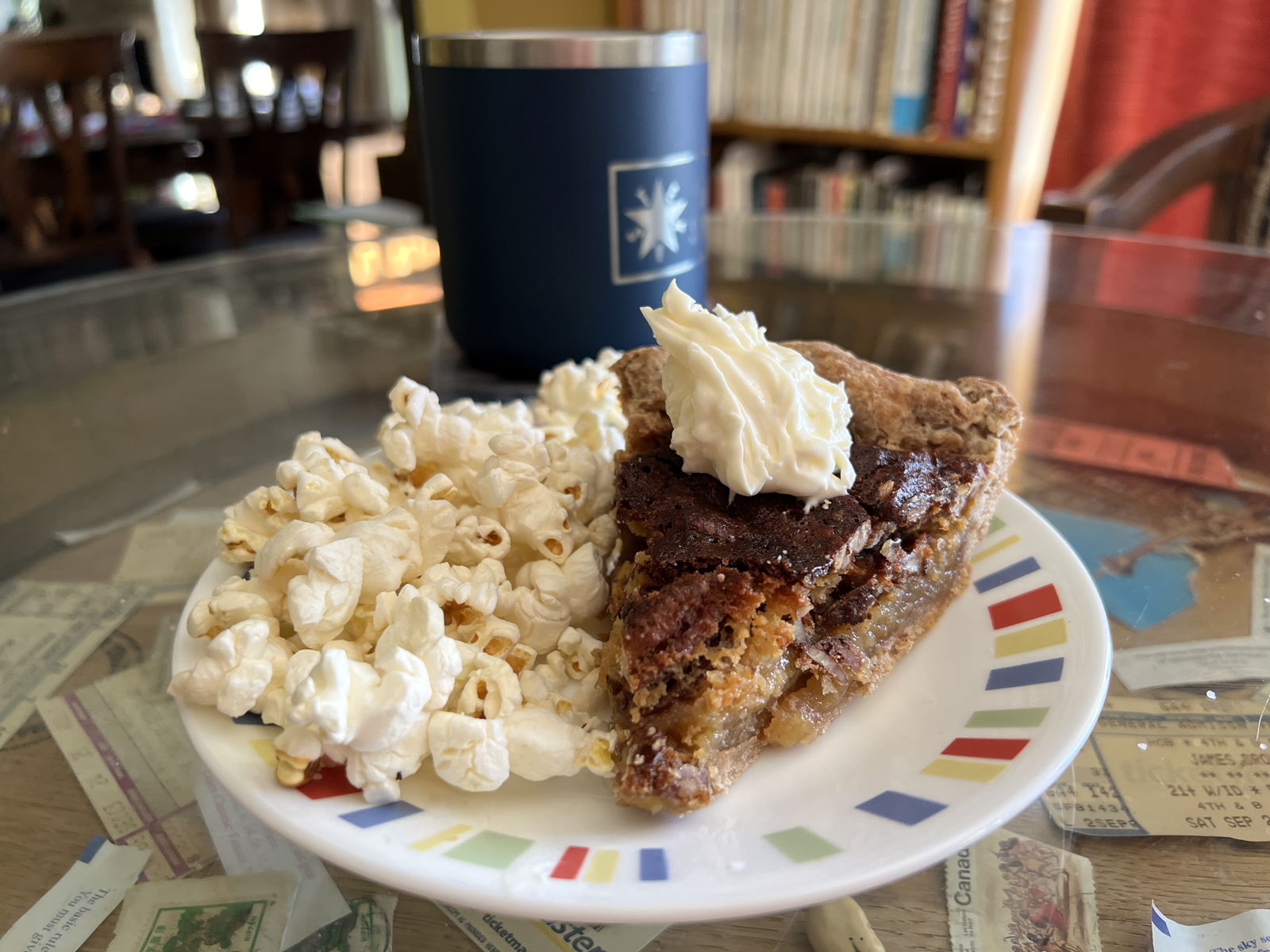- City Lights and Sensors Always Get Me Down—Wednesday, April 2nd, 2025
-

News of the DC helicopter-airliner crash came literally the day I put Italian road safety to bed. By following the forty eight hour rule into forty-eight days plus, I’m able to choose the most interesting of the hot takes, some of which are very relevant to our current policy of adding complexity wherever we see safety issues.
Because what became clear immediately and continued to be clear was the complete lack of surprise from pilots who fly that airport. It was incredible reading about the problems pilots have long complained about at Reagan National in light of the perspective and distraction problems that I covered when talking about pedestrians, cyclists, and motorists.
These complaints by pilots may well not be the reason the helicopter and passenger jet collided; that story seems to get weirder by the week. But they point to an ongoing problem that will only get worse in the air and on the ground until and unless we take it seriously. For a particularly well-written example of what I’ve been seeing, here’s commercial pilot Chris Palmer:
What I think happened in this case:
In this case air traffic control calls out to the helicopter and ask them if they see the regional jet. In this case, they called them an RJ, for shorthand.
The helicopter confirms that they see the RJ and will pass behind as instructed.
But human error, being a main cause, it’s highly likely that the helicopter crew saw the departing regional jet, which can also be seen in this video, with this landing light climbing up from the runway.
Misidentifying this aircraft that was further to the right or starboard of the helicopter, they indeed thought they were passing behind that regional jet with plenty of room to spare.
What they didn’t know, with their eyes turned to the right, was that there was an aircraft approaching them from the left. The one that they were actually supposed to be looking for.
To the airliner, and to any aircraft on a collision course, they can often be impossible to see. Especially considering this was at night, and at low altitude, the anti-collision lights on the helicopter could have easily been lost in the bright lights of the city in the background of the helicopter from the airliners perspective.
- Five Weekly Accomplishments—Wednesday, March 26th, 2025
-
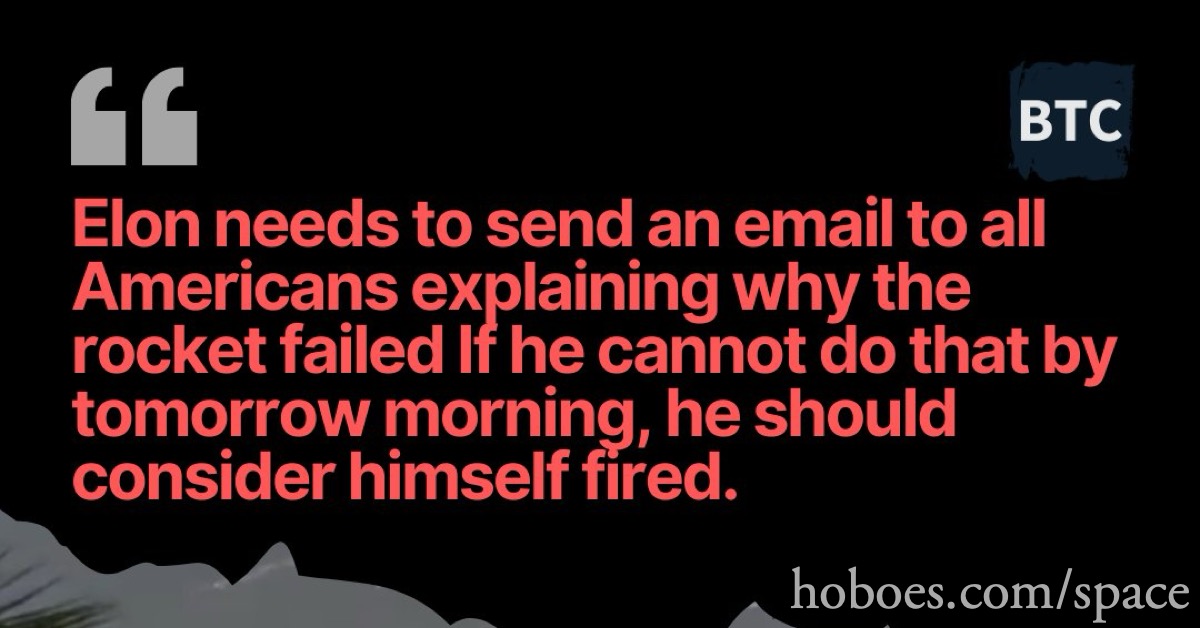
As it turns out, when this was posted he’d already sent that email a few days earlier.
I have to admit to being somewhat surprised by the backlash against government employees being requested to list five accomplishments from their past week. A recent example is a meme demanding that:
Elon needs to send an email to all Americans explaining why the rocket failed If he cannot do that by tomorrow morning, he should consider himself fired.
At the time this was posted, Musk had already sent this email. You could easily run a search on “why did the Space X rocket fail?” and get back several news stories each with the same quotes from Space X. It very clearly had been sent through the various public relations services that generate, among other things, emails to journalists for delivering news to the American people.
And, I’d add, learning the reasons the rocket failed were accomplishments. Were Space X subject to this rule (which it may well be), that launch easily resulted in five accomplishments on its own for every employee involved.
The response was that “a list isn’t the whole picture” and “I… would struggle to list five things because that’s how jobs are sometimes.”
I used to work at a private university. Due to both weird funding mechanisms and just the kind of people who get into management even at private colleges, higher education employment is a very weird amalgam of private business and government work. Our combination of information silos, funding silos, dysfunctional management, and a complete ignorance of customers was very reminiscent of Mike Judge’s• wonderful Office Space•.
Including the paperwork involved. I have very little sympathy with people who are unwilling to list five things accomplished in the last week in a simple email. While I’ve never quite had to deal with TPS report cover sheets I would have jumped at the chance to replace our six-page job evaluations with “Please reply to this email with approx. 5 bullets of what you accomplished last week”.
- Foreign policy is not a deal?—Wednesday, March 19th, 2025
-

What in the world are they teaching in schools? Peace isn’t a deal? Their playground fights must be epic. Do teachers give weapons to the underdog to keep the fight going?
I still don’t understand the “peace is not a deal” talking point. How in the world is peace achieved if it isn’t negotiated? Without negotiations, how can there be peace? War seems to be the only other option. And in fact, the slogan has been updated now that the Left wants war: it is now foreign policy that isn’t a deal.
When did the term “foreign policy” and the concept of doing the right thing change into “doing a deal”?
This is so alien I clearly must be missing something. If peace is not a deal, if foreign policy is not a deal, where do negotiations about peace take place? There doesn’t seem to be room for much except endless war.
Doing the right thing is always a compromise that requires negotiations. Doing what you think is the right thing without negotiating with the recipients of your largess is dangerously close to war. Foreign policy has always been about making deals. That’s literally what it is. Ending the Korean war was a deal. Nixon going to China was a deal. The SALT treaties were deals. Obama sending aid to Iran was a deal.
The entire history of our policy in the Middle East has been a long series of deals. One of the most famous quotes about the Middle East is the apocryphal “We must deal with our enemies, because it is our enemies with whom we make peace.” It remains popular despite its lack of provenance because it embodies real truths about both peace and foreign policy: at its best, it involves deals with enemies as well as allies.
The formulation of foreign policy is the result of negotiations within the United States among parties with different interests. Implementing effective foreign policy is the result of negotiations with foreign powers, allies and enemies. It is, literally, the making of deals between multiple parties.
- Honey pecan pie for Π Day—Wednesday, March 12th, 2025
-
I know I just did a pecan pie two weeks ago for Texas Independence Day. But you can never have too much pecan pie, and Friday is Pi Day. Why not extend it to 3.1416 and make it a Pie Weekend from Friday the 14th to Sunday the 16th?
It may take that long to finish this year’s pie.
Both the pie and the crust come from people with a deep partiality to specific ingredients. The pie shell is from Dora D. Flack, Mabel H. Miller, and Vernice G. Rosenvall’s Wheat for Man. This otherwise standard whole wheat shell adds both an egg and vinegar to the ingredients. Replacing some of the water with a bit of vinegar is always a great idea when making pie crusts—at least as long as there are no competing flavors such as orange juice, or 2023’s beer.
- Mysterium Fidei: Mortem tuam annuntiamus, Domine—Wednesday, March 5th, 2025
-
From the Agnus Dei I’ve chosen to move to the Mysterium Fidei.
- Agnus Dei
- Mysterium Fidei <-
Unlike the Agnus Dei, the Mysterium Fidei is not a linear translation to English. Here’s the Latin:
Priest: Mysterium fidei!
Congregation: Mortem tuam annuntiamus, Domine, et tuam Resurrectionem confitemur, donec venias.
Or, as we say it in English:
Priest: The mystery of faith!
Congregation: We proclaim your Death, O Lord, and profess your Resurrection, until you come again.
One of the unique and very misleading things about the Agnus Dei is how little it resembles modern English. There are only two words that even remotely resemble their English counterparts. Dei is likely the root of deity, but to be honest I’m not sure how common that word is outside of fantasy role-playing, and old-school fantasy gaming at that. Peccatorum is obviously related in some way to peccadillos in a slightly watered-down way1 but I don’t think I’ve ever heard the word peccadillos spoken out loud. I’ve only seen it in books, and then rarely.
The Mysterium Fidei, on the other hand, is filled with words that look maddeningly familiar, even if you discount the word mortem which is mainly familiar because our justice system uses Latin extensively. Mysterium. Fidei. Annuntiamus. Domine. Resurrectionem. Confitemur. And for the most part, what they look like is what they are, vaguely. Annuntiamus is announce—or proclaim. Resurrectionem is in fact resurrection. Confitemur… well, that’s a little different. But if you squint you can see it.
So let’s take it phrase by phrase:
- Texas Independence Fried Chicken and Pecan Pie—Wednesday, February 26th, 2025
-
Sunday is Texas Independence Day. Over the last decade I’ve managed to acquire several vintage Texas community cookbooks as well as several other Texas-related cookbooks from businesses such as the Imperial Sugar Company.
It’s possible that I’m overcompensating for having moved here from Michigan by way of California.
I’ve decided to start featuring these cookbooks, or at least their better recipes, for Texas Independence Day. March in Central Texas is a good time for celebrating outdoors—usually. Unless there’s a polar vortex rolling through, it’s cool but not cold, and neither dry nor humid.
One of the cookbooks I would have liked to feature earlier is the 1975 Potter County Home Demonstration Council Bicentennial Cook Book, published to coincide with the American Bicentennial. I acquired this cookbook too late for it to go into my Sestercentennial series’ inaugural entry, A Bicentennial Meal for the Sestercentennial, and that’s too bad, because it’s a very nice book. Lily Ward’s Potato Chip Cookies were the best of the three potato chip cookies I featured in last year’s National Potato Day cookie post. They were so good, I included them among the three treats I mailed out to friends over Christmas.
Mrs. C.D. Baldwin’s Hawaiian Fudge is also the inspiration for my own Les Johnson’s Antimatter Creams. It would never have occurred to me that you could heat fresh banana to 240° without harming it if I hadn’t made her pineapple fudge. Both pineapple and banana are great additions to a nut fudge. The added green food coloring, however, was only really appropriate for the radioactive variant.
- Refrigerator Revolution Revisited: 1947 Cold Cookery—Wednesday, February 19th, 2025
-
Like Montgomery Ward’s 1942 Cold Cooking, the Borg-Warner Corporation’s 1947 Norge Cold Cookery and Recipe Digest (PDF File, 10.2 MB) is marketed towards owners and potential owners of the company’s refrigerator. It’s not just a manual, but a cookbook full of reasons to use the product. While Borg-Warner was headquartered in Detroit, the Norge plant, according to this book, was across the state in Muskegon. Borg-Warner still exists; Norge long since hasn’t, although they seem to have continued in some form, probably in-name-only, up to 2006.
This is the third in a series about the first decades of the home refrigeration revolution. While I won’t be going past 1947 I will fill in some of the gaps between 1928 and 1947 with at least two more posts over the coming year. Here’s the series so far:
Revolution: Home Refrigeration
- Frigidaire, 1928
- Cold Cooking, 1942
- Cold Cookery, 1947 <-
The first part of Cold Cookery extols the wonders of the Norge “Rollator” refrigerator. It describes how to maintain the appliance and outlines how to use it: which shelves to store which kinds of food on, how to adjust the dial for freezing times, that sort of thing. The freezer section of this 1947 refrigerator was still tiny, though it did have a separate set of freezer shelves for ice cubes and frozen desserts in addition to the main freezer box.
It’s interesting what foods they considered important enough to mention. There’s a “double-width” storage space especially for “long stalk celery” and “rhubarb”. Rhubarb is one of my favorite hard-to-find items nowadays.
- Italian road safety campaign social media backfire—Wednesday, February 5th, 2025
-
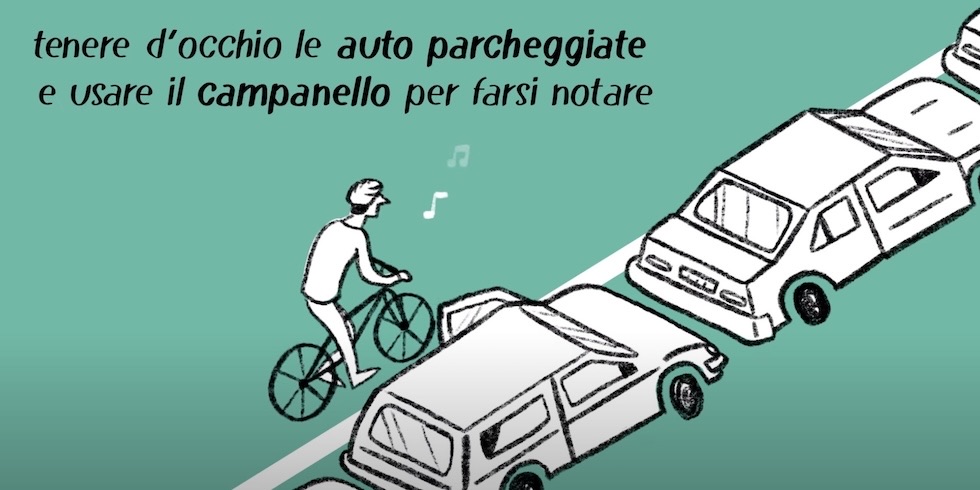
Translation: “Keep an eye on parked cars, and use your bell to be noticed.” This should not be controversial, although I might quibble with the bell.
I’ve been reading Il Post lately, both to improve my very bad Italian and to gain a non-American, non-English perspective on the news of the day. Yet somehow I missed this article about a “scandal” in Lombardy until a friend brought it to my attention with the comment “This is funny.”
It is funny, and a very good example of why I avoid social media. In a virtual environment we lose any sense of reality. In this case, it appears that a local government was actually doing something substantive to keep pedestrians and bicyclists from being killed by inattentive drivers. It turned into a social media scandal because… it told people how to effectively stay alive rather than laying blame and letting them die!
I’m not going to translate the whole thing. It’s not worth the trouble and in any case my Italian is not up to the task. The title is The questionable campaign on street safety in Lombardy. The subtitle is:
È stata sospesa dopo molte critiche a un post che dava consigli ai pedoni per evitare di farsi investire, dando un po' l'impressione di colpevolizzarli
That is, in my rough Italian:
It [the safety program] was suspended after much criticism to a post that advised pedestrians on how to avoid getting hit, giving a bit of an impression of blaming them.
The thing is, that bit of blame is no more than saying that some pedestrians don’t pay attention to the possibility of dangerous drivers when using the street. I do a lot of walking when I travel, and this is demonstrably true. Judging from the campaign’s graphics, the campaign was not about assigning blame but about saving lives.


Mimsy Were the Borogoves
When you meet lunatics halfway, it makes you a lunatic too. — Mark Steyn (Every Holiday Must Be Abolished)
